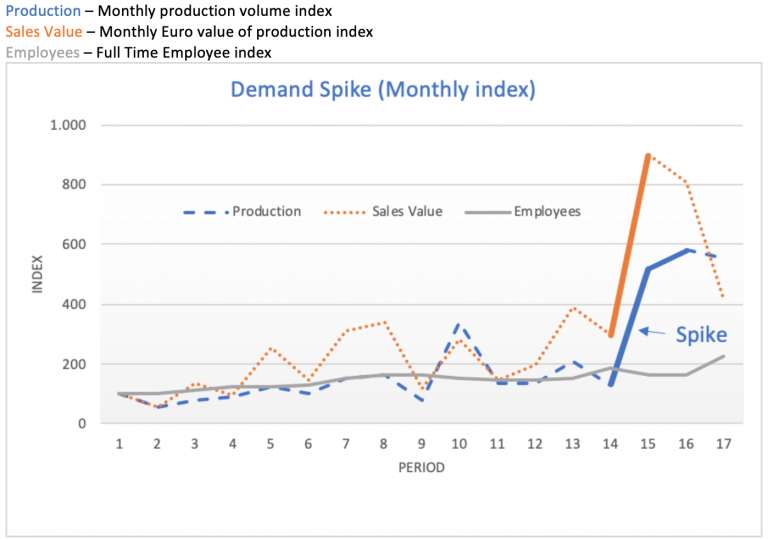Last three months were difficult for everyone. In the setting on COVID-19 some organizations experienced shutting down production completely while the others got into the craziness of spiking demand. We were fortunate to be able to continue our business and deal with 6-fold increase in production volumes.

Hiring more operators is not the only answer or not the answer at all. Before to continue, here is just a little reminder: we are in COVID-19 setting – employees are in constant risk to be quarantined. It practically meant – no meetings, working in groups no bigger than 4, no overlapping employees in groups or even in common areas of facilities or outside, disinfection intervals between the shifts, uncertainty in supply of materials. Here are the things that helped:
- Throughput increase in the production line – obviously! It means adding/ removing physical components (tubes, valves, detectors, controllers) which in turn implies reprograming of equipment and its control interfaces. Installing and testing during the night to have empty premises and idle equipment.
- Optimise your non-core processes
- Storage – have raw materials available and easily accessible based on the product that is currently running.
- Moving – have space and define moving paths for raw or packaging materials
- Transport – get your production shipped out immediately (daily) and have your client informed. This saves storage space and load moving efforts.
- Record management – in stressful situations correct information is vital – what are raw material levels, which product is being manufactured, what is packed, what is ready to be shipped and what was shipped.
- Sales administration – have your clients to confirm orders details clearly and in advance to plan batch setups, line reconfigurations, people, timetables.
- Restructuring of human resources – hiring takes and induction takes time which is too valuable resource in a temporary spike. You can see in graph that employee increase is trailing and is simply too late. This is what worked best in our setting – operating in multiple trailing shifts to have uninterrupted 16-18h/day production, reshuffling team compositions for it to be sufficient and completely independent, adding support unit to provide in secure manner whatever to keep the production running.
- Manage supplier risk – have local alternative suppliers pre-analyzed and pre-evaluated to facilitate fast decision making. We got our Asian supplier halting its production. Decision to switching to a European provider took just an hour without interruptions of processes. A change in a single component of a product can severely reduce production throughput damaging your and your clients’ bottom-lines.
To conclude the restructuring of teams and optimization of non-core processes had the best productivity/cost effect within the tight deadlines. Search, hiring and induction of new people take too long and gets your cost ballooning coupled with a reduction of productivity as current employees have to be taken to out or process stopped to train the newcomers. You can observe that in the above graph where Sales Value drops dramatically when new people put on the payroll. This is definitely an undesirable effect when you face a temporary spike in demand and have to aim all resources to exploit a temporary opportunity.


